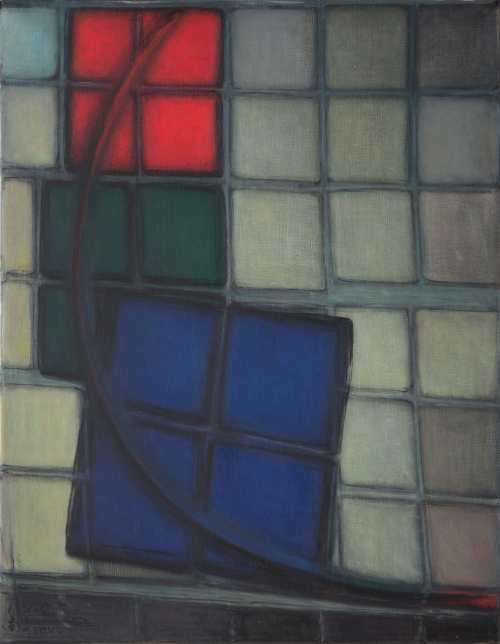About Jalil Ziapour
Jalil Ziapour, born in Bandar Anzali in 1920, is widely regarded as one of the key figures in shaping modern Iranian art. His journey in the arts began in 1938 when he moved to Tehran to attend the School of Fine Arts. At the age of 21, Ziapour entered the Faculty of Fine Arts in 1941, and four years later, he received a scholarship to study at prestigious private institutions in France.
In 1948, Ziapour returned to Tehran and, along with Gholamhossein Gharib and Hassan Shirvani, co-founded the influential literary and cultural society, "Khorous Jangi" (The Fighting Rooster). His contributions to this group were pivotal in promoting intellectual and cultural dialogues in post-war Iran. In 1952, Ziapour joined the General Department of Fine Arts and served in various official capacities until 1979.
Though Ziapour's personal artistic output, particularly in painting, was modest, his influence on the development of modern art in Iran is profound. One of his early exhibitions took place in 1946, as part of the Iranian Fine Arts Exhibition organized by the Iran-Soviet Cultural Association. His first solo exhibition was held in 1950 at the Ferdowsi Theater Hall, and he later participated in five editions of the prestigious Tehran Biennale between 1958 and 1966.
Beyond his work in modernizing Iranian art, Ziapour dedicated himself to researching Iranian folk culture. His studies on traditional Iranian clothing, jewelry, and decorative arts led to the publication of several scholarly works, contributing significantly to the preservation and understanding of Iran's cultural heritage.
Jalil Ziapour passed away in 1999, leaving behind a lasting legacy as both an artist and a cultural scholar, who played a central role in the modernization of Iranian art and the promotion of its rich folk traditions.
The Most Expensive Artwork
At Auctions
First Attendance
27 May 2016
# Attendance
1
# Artworks
1
Average Realized Price
194,595 USD
Average Min Estimate
135,135 USD
Average Max Estimate
189,189 USD
Sell-through Rate
100%
Average Growth of Artwork Worth
20%
Timeline
In Water Color exhibition
2 February
Souvenir exhibition
2 February
پنجمین دوره حراج تهران auction
27 May
